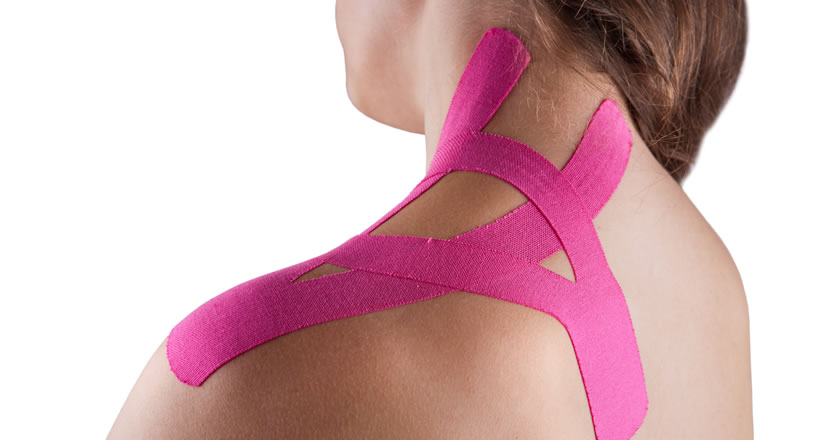Kinesio taping

Kinesiology taping was developed by a Japanese chiropractor Dr Kenzo Kase. It can be used effectively in any sports or non-sports related setting.
Most types of athletic tape have very little or no stretch, however kinesiology tape is very elastic and can be stretched to 120-180% of its original size. When non-elastic athletic tape is applied to an injury, the rigidity of the tape can cause a restriction or it can even prevent movement of the taped area. This is desirable for severe injuries where immobilisation is necessary to prevent further damage, however most injuries does not require full immobilisation. The flexibility of Kinesiology tape is well used in these cases as it provide support to injured muscles and joints, while allowing a safe and pain-free range of motion. This enables patients and athletes to continue training or competing while they recover from pain as well as minor to moderate sport related injuries.Kinesiology tape can be worn for many days as oppose to conventional tapes. Also most kinesiology taping products have a unique acrylic-based adhesive that is normally latex free and hypoallergenic as oppose to the adhesive applied to conventional tapes, which is commonly called Zinc Oxide and this sometimes leaves a residue on the skin, some patients have been known to have an adverse reaction to this adhesive.
Any type of injury or trauma to the body will set off the body's natural protective mechanism, known as inflammatory response e.g pain, swelling, heat and restricted movement. Swelling causes pressure and pressure causes pain, to reduce pain, the pressure needs to be reduced. This is achievable with Kinesiology tape as it encourages fluid to move freely by lifting the skin, and this allows more blood to flow into the injured area, thereby accelerating recovery and repair and allow lymph fluid to drain from area, thus decreasing inflammation.
Summary of the uses for Kinesiology Taping:
- Provides support for weak or injured muscles without affecting the normal range of motion. this allows full participation in therapeutic exercises and/or sports training and minimises the risk of developing compensatory imbalances or injuries.
- Activates muscles that have been weakened after injury or surgery, improving the quality of contractions and speeding up the recovery process.
- Stabilises the area without restricting the movement like conventional athletic tape.
- The athlete and patient can remain active during the sport/activity.
- Relaxes, and can offload, overused and overstrained muscles.
- Assists the re-education of the neuromuscular system.
- Accelerates blood flow to the injured area to speed up the healing process.
- Helps to reduce pain.
- Reduces oedema by removal of lymphatic fluid.
- Corrects postural imbalance and improves range of motion.
- Inhibits muscles that are tight, fatigued or overused and allows them to relax.
- Helps prevent injury.
Site designed by Release-Remedial Therapies© | Login
